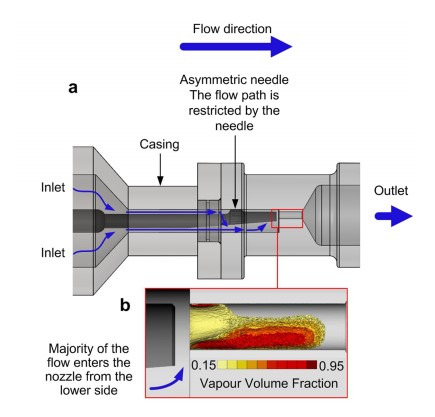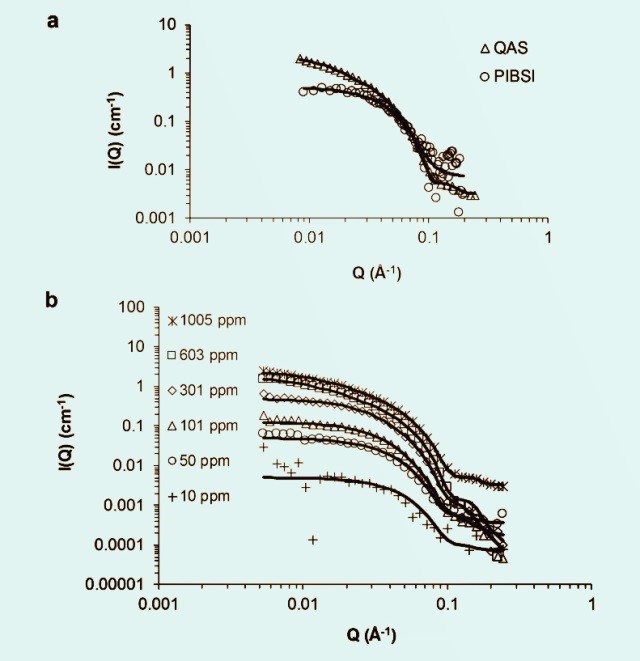Scientists from City, University of London and Lubrizol Limited have been using neutron technology at the ISIS Neutron and Muon Source to test the role that modern additives play in reducing flow losses – and therefore increasing the efficiency of fuel injectors, in engines fuelled with diesel or biodiesel.
The Basics of Fuel Injection
Fuel injection, i.e. the process of delivering fuel to an internal combustion engine was introduced in the mid-1920s. The purpose of the system was to deliver the fuel in a form that could be readily and effectively combusted. Whilst the logistics of controlling the functioning of an engine gets pretty complicated, the science at the heart of such a mechanism is actually relatively simple. You could describe the injector as an electronically-controlled valve that is capable of opening and closing many times per second via a shutter-like mechanism. Upon activation, an electromagnet in the injector moves a plunger that opens the valve and permits the movement of pressurized fuel through a tiny nozzle. This nozzle is super important because it plays a role in atomising the fuel – that is – it makes the solution into a very fine mist which increases its combustibility. Higher ignition rates means higher efficiency and reduced economy – which effectively translates into more miles for your money.

Figure 1 –Quantification of the
effect of the QAS additive on cavitation using X-ray micro-CT Image credit:
Homa Naseri et al. “Turbulence and Cavitation Suppression by Quaternary
Ammonium Salt Additives” Scientific Reports, Nature DOI: 10.1038/s41598-018-25980-x
Analysing the use of Fuel Additives
It is a well-established fact that the fuel injection systems operate less effectively when the injector holes become clogged with deposit. It is for this reason that fuel suppliers have been incorporating additives into fuel in order to keep injectors 'deposit-free' and improve the fuel flow. In the fuel industry, previous experiments have shown that advanced DCA's (deposit control additives) containing a type of surfactant known as QAS (quaternary ammonium salt) have the ability to remove deposit and then increase the volumetric efficiency of the clean injectors by up to 5%. The success of this approach lies in what scientists call the 'viscoelastic property' of the fuel.
Viscoelasticity is a property of materials that display both elastic and viscous characteristics under stress. What this means is that the material in question exhibits properties of both the solid and the liquid phase. A really commonplace example of this phenomenon occurs in synthetic polymers such as the nylon in your tights or the polyester in your jacket.
Up until fairly recently, it was widely postulated in the literature that quaternary ammonium surfactants could be very effective in reducing turbulent drag in aqueous solutions. However, very little was known about the effects of surfactants in oil-based solvents or in cavitating flow conditions - until now.
Why SANS?
The team from City, University of London and Lubrizol Ltd used SANS (small-angle neutron scattering) to investigate variations in surfactant aggregation of the QAS (quaternary ammonium salt) additive and the traditional PIBSI (Polyisobutylene Succinimide) additives and their concentration dependence. SANS studies using SANS2D at the ISIS Neutron and Muon Source revealed significant differences between the micellar structures of the traditional PIBSI additive, which have been added to diesel fuels for over 30 years, and the newly developed QAS additive.
Micelles are a type of structure formed spontaneously by amphiphilic molecules called surfactants, in polar solvents. The shape that these self-assembled micelles adopt could be spherical, cylindrical (worm-like) or lamellar, depending on solution concentrations, as well as ionic strength of the solution and temperature. The cylindrical form can further be characterised into branched micelle networks that lower viscoelasticity or wormlike micelles that contrastingly enhance viscosity of solutions. It is the latter of these examples which has proven to be invaluable for reducing drag within fuel.

Figure 2 – Plotting the intensity of scattered neutrons (NH8) against the scattering vector for test sample additised with the PIBSI (○) and the QAS (Δ) additives at 1000 PPM. Image credit: Homa Naseri et al. “Turbulence and Cavitation Suppression by Quaternary Ammonium Salt Additives" Scientific Reports, Nature DOI: 10.1038/s41598-018-25980-x
ISIS Neutron and Muon Source & Industry
Scientists at City, University of London and Lubrizol Ltd have used the SANS2D instrument at ISIS Neutron and Muon Source to develop a core understanding about the effect that quaternary ammonium salts (QAS) - found in deposit control additives- have on injector flow conditions. Not only that, but they were also able to uncover exactly how flowrate enhancement mechanisms work through fuel injection systems.
“Our SANS results were able to confirm the presence of micelles in solvents similar to that of diesel fuel. Of particular interest was the discovery that different deposit control additives formed different micellar structures and that this has implications for fuel flow through injectors. Determining the presence of micellar structures at the very low concentrations relevant to fuel additives was only possible with advancements in small-angle neutron scattering technology and the increased sensitivity offered by the instrument SANS2D. Our long-standing and successful collaboration with ISIS continues to provide new insights into fuel and lubricant technology."
Dr Kieran Trickett, Manager of Strategic Research, Research and Development, Lubrizol Limited
Future applications
Further to the neutron analysis, the team at City, University of London (Manolis Gavaises, Nicholas Mitroglou, Homa Naseri and Ioannis Karathanassis) employed techniques such as X-ray micro-CT and X-ray phase contrast imaging to unravel the secrets behind cavitation and the influence additives have in shaping this process.
Cavitation occurs when the pressure of a liquid suddenly falls below the saturations pressure, leaving behind an area of low pressure which often manifests itself as bubbles of gas. These bubbles collapse and when they do so, they create a shock-wave which can cause some serious damage, most notably in propeller-based systems in ships. Cavitation, however, isn't just limited to nautical systems, it can also occur within fuel injector nozzles, where it can have both positive and negative effects which could lead to system failure. By understanding more about the effect of cavitation on fuel injection, we can pave the way for future development into fuel injection systems.
Because the mechanism of fuel injection plays such a crucial role in the efficacy of fuel combustion within internal combustion engines, it can have major effects on the production of harmful pollutants and their subsequent escape into the environment. Therefore, it makes sense that the more we do to minimise the negative effects of cavitation and enhance the positive effects, in this case through the use of selective additives, the more we reduce pollution. In a world where the population is only expanding and energy demands are only going to keep rising, data gathered in experiments like this one couldn't be more welcome.
“Understanding the physical mechanisms involved in the interaction of cavitation and viscoelasticity enables us to limit the losses incurred in fluid machinery by controlling the fluid properties."
Homa Naseri (City, University of London)
Research date: May 2018
Further information
Read the full research article: Homa Naseri et al. “Turbulence and Cavitation Suppression by Quaternary Ammonium Salt Additives" Scientific Reports, Nature DOI: 10.1038/s41598-018-25980-x
Learn more about the ISIS Neutron and Muon Source instrument SANS2D.
Browse all our science highlights here.
